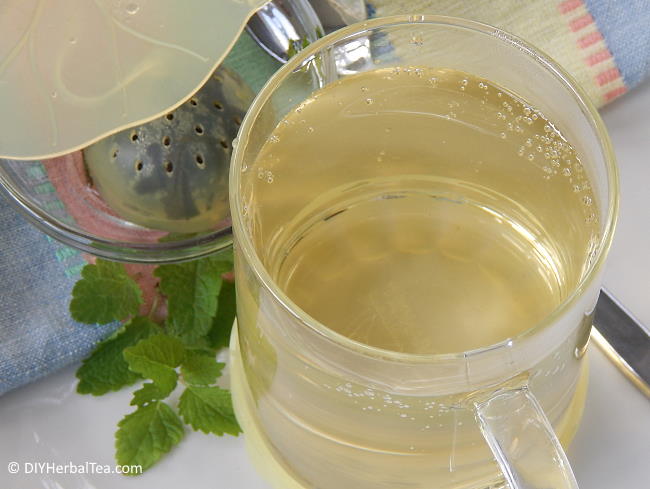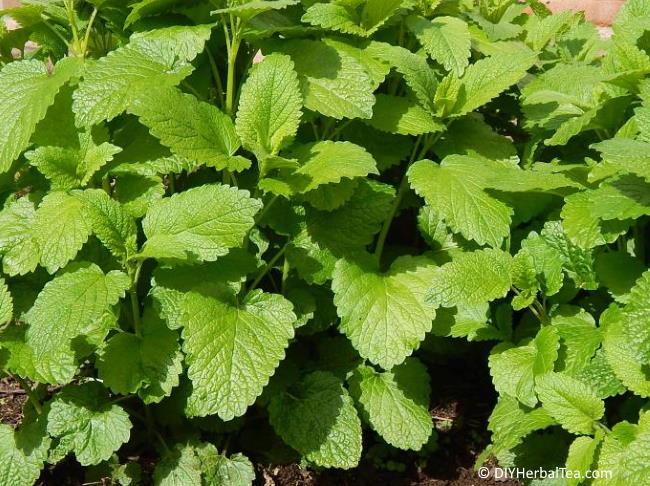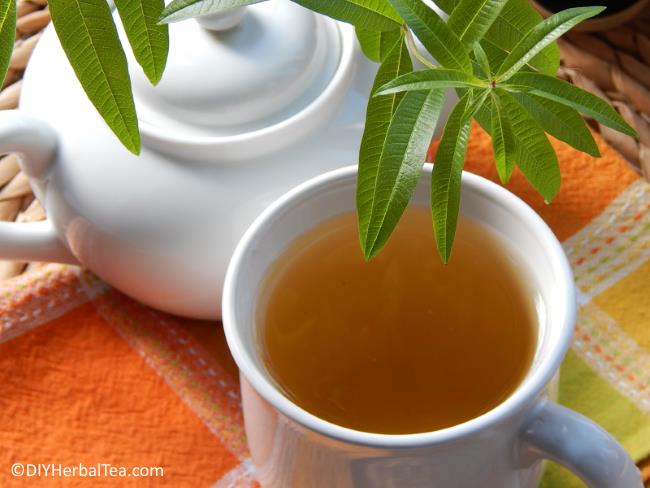The Truth About
Indoor Herb Gardening
Some people have a natural talent for indoor herb gardening. Unfortunately for me, I'm not one of those people.
For years, I'd read all the books and blogs that assure us:
"Anyone can grow herbs indoors! Just give your plants a warm, sunny spot, water them regularly, and feed them occasionally. You'll enjoy fresh herbs all winter long."

The truth is: It's not quite that simple - as I discovered the first winter I attempted to grow my tea herbs indoors.
Long story made short ...
I began with lush, healthy plants. And I diligently followed the "rules":
|
|
Warm, sunny window? Check. |
|
|
Regular watering? Check. |
|
|
Organic fertilizer, used as directed? Check and check. |
|
|
Harvest fresh herbs all winter long? Umm ... not exactly. |
|
Within two months, my indoor tea garden was a pretty sad sight. |
And my cinnamon basil totally gave up the ghost.
The only herb that seemed to tolerate indoor living was my lemon balm. And that turned nearly flavor-less by mid-December.
Sweet Mint Plant
(Oops!)

Since that early failed effort, I've spent my long, cold New England winters reading, experimenting, and learning how to grow my tea herbs indoors - successfully.
5 "Truths" About Growing Herbs Indoors
Here's what you need to know:
Truth #1: Light Matters

When herbs don't get enough good, nourishing sunlight (12+ hours a day), sooner or later they'll either go dormant or die off.
For those of us who live in parts of the world where winter days are short and the sunlight is weak, "grow lights" are a must.
For very little money, a simple light fixture and bulb will keep your herbs happy. (Here's one of my favorites.)
I set my grow lights to click on at 7 a.m. and off around 8 p.m. That works just fine for my little plant pals, and it should for yours, too.
Truth #2: Wetter Isn't Better

The natural urge is to water your plants on a regular schedule, every few days or so. But that's the wrong way to go at it.
Only water your herbs when they really need it - when the top two inches of soil feel dry to the touch.
Poke your finger down into the container. If the soil is still damp, leave it alone. If it's dry, give your plant a drink, making sure that all water drains out the bottom of the pot.
Remember: Most herbs can survive a little drought. Soggy roots will kill them.
Truth #3: When They're Hungry, They'll Eat

Plants are a lot like kids. If they're not hungry, there's no sense putting a big plate of food in front of them.
In winter, a plant's growth naturally slows, which makes it less hungry. "Force feeding" your plants won't increase their growth or leaf production, no matter how much we wish it would.
A once-a-month dose of liquid organic fertilizer mixed with lukewarm water is plenty. Any more than that is a waste.
Truth #4: Everyone Needs a Breath of Fresh Air

How do you feel when you've been cooped up in the house for days on end? Not like your usual vigorous self, I'll bet.
Fresh air does wonders for everybody - plants included!
On those balmy winter days (50 degrees F or above), crack a window and give your herbs a breath of fresh air.
On colder days, a gentle breeze from a small fan won't go amiss, either. Some moving air helps prevent diseases and bug issues.
Truth #5: Sometimes It's Nature, Not Nurture
By their nature, annual herbs (German Chamomile, for example) have a one-year life cycle. They start, grow, bloom, then die, all in the same year.
If your annual herbs have been growing all summer, don't expect them to keep on growing through the winter, no matter what you do.
Perennials (like lemon verbena, stevia, and most mints), on the other hand, can live for 4-5 years or more. But don't expect them to flourish all year round.
Perennial herbs only produce new growth for part of the year. Then they need to "rest" before another growing season begins. Try to force them to grow when it's not their time, and you'll likely kill them.
So ... what to do?
- Start some new annuals in early fall to grow indoors throughout the winter months.
- Work with your perennial herbs, not against them. Harvest and preserve as much of each herb as possible during the growing season, so you'll have plenty for your herbal teas over the winter. Then allow your perennials their much-needed rest, and they'll reward you again next summer.
Hint: I've discovered a way to "trick" my mints into growing indoors well into February. In mid-autumn, I dig up some baby mint runners (roots and all) from my garden, move them into a container filled with fresh potting mix, and let them get a good start outdoors.
Then, just before the first frost, I transition them to inside life and keep them going with the help of grow lights.
Is Indoor Herb Gardening Worth The Effort?
Do my tea herbs grow as nicely inside as they do outdoors? Nope. Like me, they're a whole lot happier when it's 82 degrees and sunny and they're hanging out in the garden.
Is it worth the extra effort to grow tea herbs indoors during the off-season? IMHO, absolutely!
A warm cup of fresh chocolate mint tea on a snowy February day ... yum! And so much better for the waistline than hot cocoa! ;-)
PRODUCTS MENTIONED ON THIS PAGE
Please Note: If you make a purchase through one of these links, I may receive a small commission from Amazon. There's no extra cost to you. Because I value your trust in my recommendations, I
only recommend products that I use or would purchase for myself or my
best friend.

If you enjoyed this article and found it helpful, please click the "Like" button to let me know. Thanks!



New! Comments
Feel free to leave me a comment in the box below!